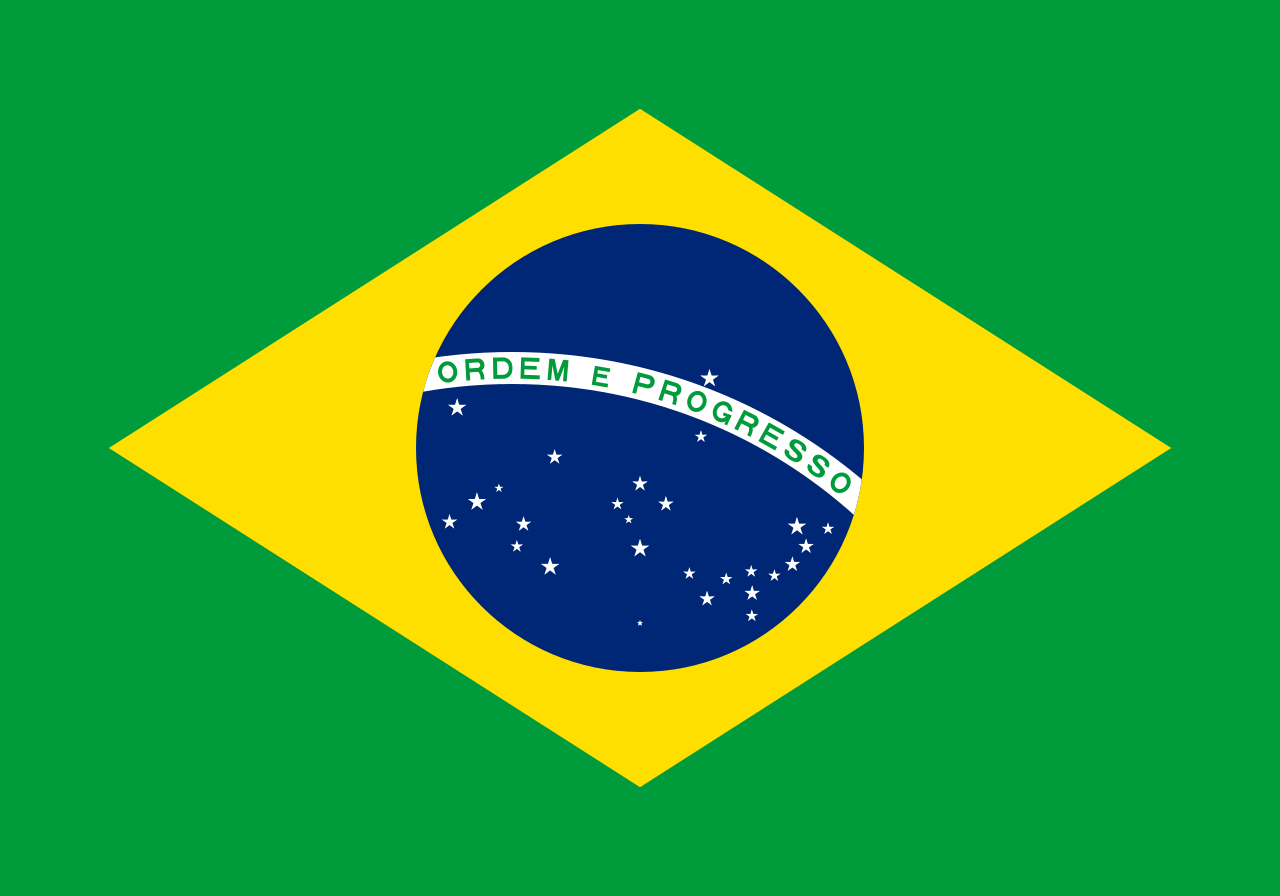The flag of Brazil is one of the most recognizable national flags in the world, featuring a unique design that reflects the country’s natural wealth, cultural heritage, and national motto. It was officially adopted on November 19, 1889, shortly after Brazil became a republic.
Design and Elements
- Main Colors: Green, yellow, blue, and white.
- Green Field: The background of the flag is green, symbolizing the lush forests of Brazil, particularly the Amazon rainforest.
- Yellow Rhombus (Diamond): A yellow diamond is centered on the green field, representing the country’s abundant mineral wealth, especially gold.
- Blue Globe with Stars: Inside the yellow diamond is a blue globe featuring a depiction of the night sky as seen over Rio de Janeiro on November 15, 1889 (the date of the proclamation of the republic).
- The globe includes 27 white stars arranged in the pattern of the constellations visible on that night, representing the 26 states of Brazil and the Federal District.
- Stars and Constellations: Notable constellations include the Southern Cross, Canis Major, and Scorpius, among others.
- National Motto: Across the blue globe is a white band with the national motto “Ordem e Progresso,” which translates to “Order and Progress.”
Symbolism
- Green: Represents Brazil’s vast rainforests and natural wealth.
- Yellow: Symbolizes the country’s rich natural resources, particularly gold.
- Blue Globe and Stars: Reflect the sky and the stars seen over Rio de Janeiro at the moment of the country’s transition to a republic. Each star corresponds to a specific Brazilian state, symbolizing national unity.
- Motto “Ordem e Progresso”: Reflects the country’s aspiration for social order and development, inspired by the positivist philosophy of the 19th century.
Proportions
- The flag has a 7:10 ratio, making it slightly wider compared to many other national flags.
Historical Context
- The current flag replaced the previous imperial flag of Brazil, which featured the royal colors of green and gold and the imperial coat of arms.
- The design, inspired by the positivist motto and the celestial arrangement, was intended to symbolize Brazil’s new republican ideals while maintaining connections to its natural beauty and historical heritage.
The flag of Brazil is not only visually distinctive but also rich in meaning, symbolizing the country’s natural environment, history, and aspirations for a future of unity and progress.
